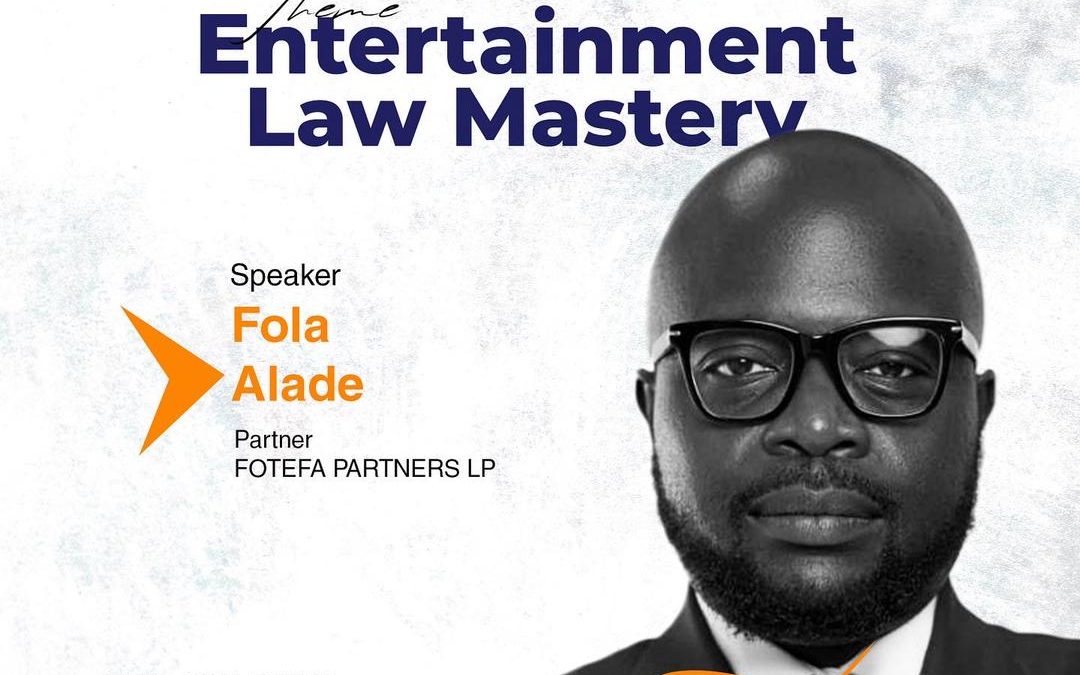
by Legalnaija | Sep 4, 2022 | Uncategorized

Fola Alade is a Notary Public and an Accredited Attorney- Mediator based in Lagos. He is the Founder/ Principal Partner at FOTEFA PARTNERS LP (MEDIATORS & MEDIATION ADVOCATES), a bespoke Mediation firm in Nigeria
Fola Alade is a Fellow, World Mediation Organization (WMO), Mediator of the Global Mediation Panel at the Office of the Ombudsman for United Nations Funds and Programmes, a Certified Mediation Advocate with the Standing Conference of Mediation Advocates (U.K), a trained Mediator on the Panel of Neutrals of the Federal High Court(FHC), Lagos Multi-Door Courthouse (LMDC), Edo State Multi- Door Court House(EMDC), Lagos Court of Arbitration (LCA) and Lagos Chamber of Commerce and International Arbitration Centre (LACIAC), a trained Negotiator from the Lagos Business School (LBS), a Certified Emotional Intelligence Specialist and a Certified Trainer(International Award in Delivering Training[IADT] UK) with the London Professional Training Centre.
He is the Founder/Principal of Fotefa Mediation Academy, another bespoke Mediation Training Academy where he trains on the business and practice of Mediation. He is also the Executive Director of the Incorporated Trustees of Attorney-Mediators Association (ATMA), a Consultant/Facilitator/Trainer with the Standing Conference of Mediation Advocates (SCMA Nigeria), Betaworka Cosmopolitan Partners Limited, Au Courant Legal Research Firm, Legally Engaged Academy and the Resource HQ Ltd where he trains on Negotiation, Mediation, Mediation Advocacy, Workplace Conflict and Emotional Intelligence.
He was a Judge at the 8th Edition of the 2TG-RMLNLU International Mediation Competition and the 17th Edition of the International Commercial Mediation Competition.
Fola was called to the Nigerian Bar in 2007 after obtaining his LLB Hons Degree from the University of Lagos in 2006. He is a member of the Nigerian Bar Association (NBA) and the Section on Business Law (SBL), Lagos Court of Arbitration (LCA) and a Partner member with the NCMG International (Negotiation and Conflict Management Group International).

TRAINING OVERVIEW
Theme: Entertainment Law Mastery
MODULES–
- a)Music Contracts & Agreements
- b)Film & media Agreements
- c)Negotiation & Dispute Resolution
- d)Talent Acquisition & Management
- e)Licensing & the Film Business
- f)Etiquette & public speaking
MEMBERS OF FACULTY
- Beverly Agbakoba-Onyejianya (Partner, Olisa Agbakoba Legal
- Akinyemi Ayinuoluwa (Partner, Hightower Solicitors)
- Fola Alade (Partner, FOTEFA Partners LP/ Mediation Academy)
- Oyinkansola Fawehinmi (Foza) (Founder/President, DMCE.)
- Yeye Bush (Lead Etiquette Consultant, Manners Matter)
- Nkechukwu Otike – Odibi (Senior Legal Executive, EbonyLife Media)
DATE–29th and 30th September, 2022
TIME– 9.00am – 5.00pm Daily
REGISTRATION
Register for either the physical or virtual sessions.
Physical Session:
Fee: 70,000 Naira
Early Bird: 50,000 Naira (ends 7th Sept, 2022)
Registration Link: https://bit.ly/3znIb4w
Venue: NECA House, Alausa, Ikeja, Lagos
Virtual Session (ZOOM)
Fee: 50,000
Early Bird: 30,000 (ends 7th Sept, 2022)
Registration Link: https://bit.ly/3CbB6Y9
Get 10% Off the virtual session when you use the code: LEGAL9JA
PAYMENT DETAILS–
Lawlexis International Limited
Fidelity Bank
4011176564
Participants will receive a certificate of participation.
NOTE: All payment and delegate information should be sent to lawlexisinternational@gmail.com before the date of training for proper registration. For more information and confirmation of payment, kindly contact us on 09029755663.

by Legalnaija | Aug 31, 2022 | Uncategorized
Become An Entertainment Law Expert By Learning From Award Winning Entertainment Lawyers (Career Training For Lawyers; Hybrid Session)
According to statistics, this year total revenue in the Nigerian Entertainment industry is projected to reach US$4.77m. Furthermore, a PwC report forecasts that the fast-growing industry will earn $14.8bn in 2025.
As Nigeria’s media and entertainment industry continues on its growth path, it urgently requires more lawyers who understand the business and the laws that apply to entertainment law.
Lawlexis has put together a stellar faculty of award winning entertainment lawyers and experts to provide participants with a clear mastery of the entertainment industry, and how lawyers may make more impact and take advantage of the opportunities therein.
Modules for this training include;
– Music Contracts & Agreements
– Film & media Agreements
– Negotiation & Dispute Resolution
– Talent Acquisition & Management
– Licensing & the Film Business
– Etiquette & public speaking
The Members of Faculty include;
– Beverly Agbakoba-Onyejianya (Partner, Olisa Agbakoba Legal)
– Akinyemi Ayinuoluwa (Partner, Hightower Solicitors)
– Nkechukwu Otike-Odibi, Senior Legal Executive at EbonyLife Media
– Fola Alade (Partner, FOTEFA Partners LP/ Mediation Academy)
– Oyinkansola Fawehinmi (Foza) (Founder/President, DMCE.)
– Yeye Bush (Lead Etiquette Consultant, Manners Matter)
Other details are:
Theme: Entertainment Law Mastery
Date : 29th & 30th September, 2022
Time: 9am – 5pm daily
Registration:
- Physical Session:
Fee: 70,000 Naira
Early Bird: 50,000 Naira (ends 7th Sept, 2022)
Registration Link: https://bit.ly/3znIb4w
Venue: NECA House, Alausa, Ikeja, Lagos
Virtual Session (ZOOM)
Fee: 50,000
Early Bird: 30,000 (ends 7th Sept, 2022)
Registration Link: https://bit.ly/3CbB6Y9
Persons who should attend include lawyers and stakeholders in the entertainment industry at all levels. If you want a successful practice in Entertainment law and business, you may not come across such unique opportunity to learn from these lineup of experts again.
For enquiries, please contact: Lawlexis – lawlexisinternational@gmail.com or 09029755663
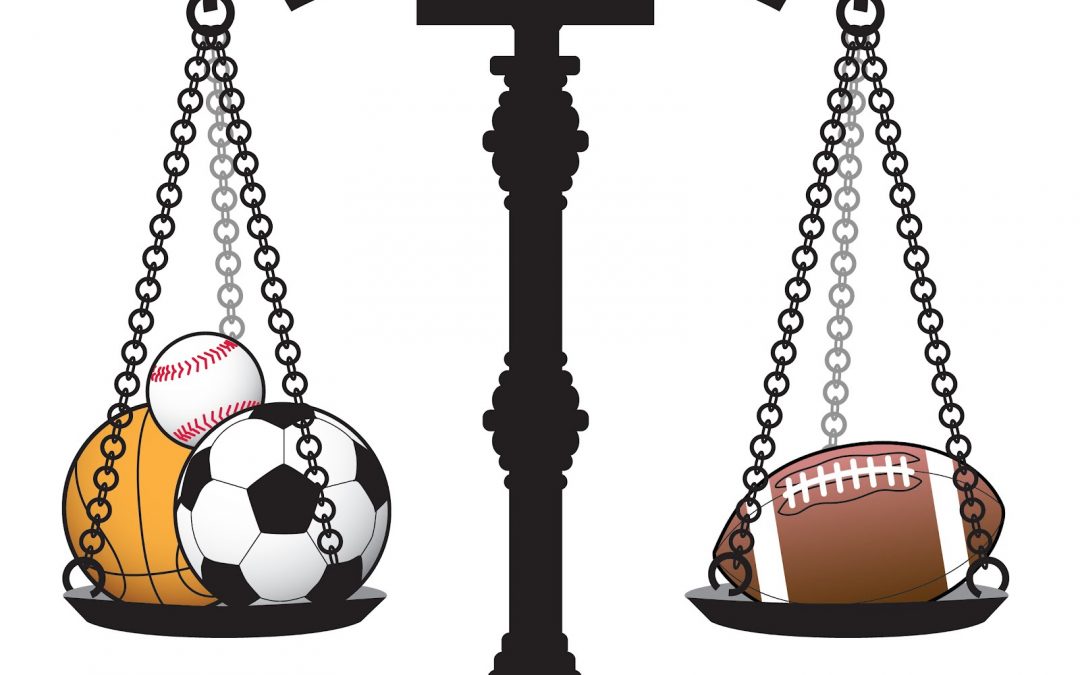
by Legalnaija | Aug 30, 2022 | Uncategorized
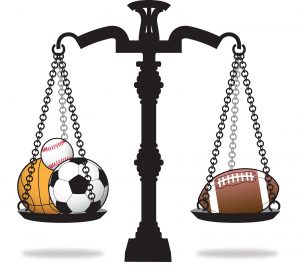
In the 2021/2022 January transfer window, Gabonese striker, Pierre-emerickAubameyang secured a move from English Premier League team, Arsenal Football Club to FC Barcelona on a free/bosman transfer. Despite the details of the move being sketchy, Arsenal Football Club reportedly paid seven million pounds to the former African footballer of the year to terminate his contract.[1]Also, Spanish giants, Football Club Barcelona have been attempting a summer overhaul with an aim to reduce the amount of players on the club’s payroll. These players are deemed surplus to requirement due to them not being considered important enough to be on the club’s wage bill as the club embarks on what seems to be a rebuild.
In light of these, it would be Important to analyze termination of footballers contract and what it entails. Can a club terminate a player’s contract unilaterally? Can a player terminate his own contract unilaterally? What happens when a player wants out of a club, and the club doesn’t want to release him? These questions and many more will be scrutinized below.
What is a contract?
Before going deep into what termination of contracts mean, it is important for the definition of contracts and its significance in football to be discussed.
According to the Cornell Law School,” a contract is an agreement between private parties creating mutual obligations enforceable by law. The basic elements required for the agreement to be a legally enforceable contract are: Mutual consent, expressed by a valid offer and acceptance, adequate consideration; capacity and legality. Contracts are promises that the law will enforce. If a promise is breached, the law provides remedies to the harmed party, often in form of monetary damages, or in limited circumstances, in the form of specific performance of the promise made”.[2]
The importance of contracts in football and sports in general cannot be overstated. It is one of the basic principles on which sports is founded. For example, when a local athlete decides to participate in a track event, likely a 100 meter sprint in return for a particular reward which might be monetary or in the form of medals. A contract has taken place between both sides as there is an offer, acceptance, consideration and legal enforceability as it is a commercial transaction. This is also applicable to football, whereby a team of agrees to participate in a competition for a reward. However, I will not be speaking on these types of contracts as they are not the focus of this paper. Top level football contracts are more multifaceted than these simple agreements. Football in recent years has become a commercially viable source of income for a lot of people: club owners, footballers, football agents, corporate bodies and brands, sportswear and kit brands and even lawyers.
The football transfer market is a global one with the English Premier League alone having a net spend of €893m in the 2021/2022 Summer transfer window.[3] These Incredible developments have also introduced a lot of intricacies in the sport and the way contracts are being signed and established in the sport. Agents and clubs have to negotiate for a lot of things, from salaries to the Image rights of a particular player.
However, when a player doesn’t find the club attractive anymore or doesn’t adapt to a club’s playing style, what does he do? What if he decides to leave a club in search of a bigger club or a new challenge? The simple way is to offer himself to clubs and hope a club deems him valuable enough to pay a transfer fee for him.
Also what happens when a club does not have need of a footballer services anymore? This leads us to the main topic of termination of contracts in football.
What is Termination of Contract?
Simply put, contract termination is the lawful ending of a contract before that contract is completed. It can be done by one of the parties for different reasons, it can also be due to a termination clause in a player’s contract, an issue concerning the payment of wages of a player, medical grounds, gross misconduct on the part of the player, criminal offenses, lack of playing time and many other reasons.
The position of the law is clear on termination of contracts between players and football clubs. The rules guiding these activities are outlined in Article 13 – 17 of the Regulations on Status and Transfer of Players (RSTP) 2016.
Article 13 of the RSTP expressly provides that:“A contract between a professional and a club may only be terminated upon expiry of the term of the contract or by mutual agreement.” [4]
This is the regular procedure for terminating a football contract, when a term ends or when the two parties (player and club) come together to end the contract mutually. However, as this is not always the case and to also protect both parties interest and rights, there are exceptions to this rules which are stated in other Articles.
Article 14 allows for the termination of a footballer’s contract provided the party that wishes to terminate the contract has a “just cause” to do so. In its words:
“1. Contract may be terminated by either party without consequences of any kind (either payment of compensation or imposition of sporting sanctions) where there is just cause.
- Any abusive conduct of a party aiming at forcing the counterparty to terminate or change the terms of the contract shall entitle the counterparty (a player or a club) to terminate the contract with just cause“[5]
The phrase “just cause” is very important as it forms the basic crux of many legal disputes and judicial battles between footballers and clubs. This phrase is classified into two main parts: “financial just cause” (nonpayment of salaries) or “sporting just cause” (appearances and playing time of players).
This is explained further in article 14:
- In the case of a club unlawfully failing to pay a player at least two monthly salaries on their due dates, the player will be deemed to have a just cause to terminate his contract, provided that he has put the debtor club in default in writing and has granted a deadline of at least 15 days for the debtor club to fully comply with its financial obligation(s). Alternative provisions in contracts existing at the time of this provision coming into force may be considered.
- For any salaries of a player which are not due on a monthly basis, the pro-rata value corresponding to two months shall be considered. Delayed payment of an amount which is equal to at least two months shall also be deemed a just cause for the player to terminate his contract, subject to him complying with the notice of termination as per paragraph 1 above.
- Collective bargaining agreements validly negotiated by employers’ and employees’ representatives at domestic level in accordance with national law may deviate from the principles stipulated in paragraphs 1 and 2 above. The terms of such an agreement shall prevail.
In summary, the article provides that a player can terminate his contract provided he is owed by the club in which he plies his trade if he is being owed for a particular amount of time depending on the basis he is being paid, either weekly or monthly. In cases whereby a player is paid weekly or based on the hours he uses at work, two months equivalent of that salary would be deemed enough as a reasonable and just grounds to terminate his contract.
This particular law been tested many times. For instance, in 2018 former Cameroonian International, Alex Song, left his former club, Rubin Kazan, after FIFA intervened and his contract terminated due to the club’s inability to pay its players’ wages. It was stated that the player was being owed 7.9 million pounds by Rubin Kazan.[6]
Also worthy of note is the case of OmoleyeTosin and Eyimnba Football Club where the footballer where the Footballer was able to terminate his contract with the club in line with Article 14 of the rules on the status and transfer of players (RSTP). His lawyer, T.C Ujah, LLD on behalf of SportHouse LP wrote:
“Under the extant laws and regulations, particularly the Regulations on the Status and Transfer of Players, the current circumstances of the treatment meted out to our Client together with the refusal and failure to pay his monthly salaries and financial entitlements (now over two months) constitute just cause for the termination of the playing contract, for which Enyimba Football club is liable.
“TAKE NOTICE, therefore, that our Client hereby formally terminates his contract with Enyimba Football Club, effective immediately.[7]
Article 15 also provides for termination of contracts due to “sporting just cause “, It explicitly states that:
An established professional who has, in the course of the season, appeared in fewer than ten per cent of the official matches in which his club has been involved may terminate his contract prematurely on the ground of sporting just cause. Due consideration shall be given to the player’s circumstances in the appraisal of such cases. The existence of sporting just cause shall be established on a case-by-case basis. In such a case, sporting sanctions shall not be imposed, though compensation may be payable. A professional may only terminate his contract on this basis in the 15 days following the last official match of the season of the club with which he is registered”.[8]
Article 15 provides players with the ability to terminate their contract for “sporting just cause” where they have played in less than 10% of their club’s fixtures in the relevant season. This allows a player to join another club without fear of the potential sporting sanctions that may be imposed upon them for a breach of contract without just cause.
The article is guided by the decision of the Court of Arbitration for Sports (CAS) in the landmark decision of O. v. FC KryliaSovetovSamara .[9]
The concept of the “established professional ” needs to be considered not only on the basis of the player’s age but also on the basis of “his sporting level as demonstrated during his career, in terms of an acceptable standard in the light of the specificity of the sport, the player’s legitimate expectations and what is expected of the player in terms of sporting performance.
The participation by a player in more or less than 10% of the official matches played by his club is calculated by reference to the number of matches in which the player played, but also according to the time he was on the field. A player cannot rely on Article 15 if he has not notified his club during the season of his dissatisfaction with the fact that he is not actively participating in the team’s games.[10]
Worthy of note is that this particular process is usually full of complications as the phrase “just cause” has to be defined in a case by case basis by FIFA Dispute Resolution Chamber (DRC) or an arbitration panel.
Also, it is important to note that a contract cannot be unilaterally terminated by one party during the course of a season. This is in accordance with Article 16 of the RSTP. Both parties have to come to a mutual agreement such as in the case of Pierre-emerickAubameyang and Arsenal Football Club.
Article 17 of the RSTP further states the consequences of terminating a player’s contract without “just cause”
“All cases, the party in breach shall pay compensation. Subject to the provisions of article 20 and Annexe 4 in relation to training compensation, and unless otherwise provided for in the contract, compensation for the breach shall be calculated with due consideration for the law of the country concerned, the specificity of sport, and any other objective criteria. These criteria shall include, in particular, the remuneration and other benefits due to the player under the existing contract and/or the new contract, the time remaining on the existing contract up to a maximum of five years, the fees and expenses paid or incurred by the former club (amortized over the term of the contract) and whether the contractual breach falls within a protected period. It then lays down a set of rules guiding the calculations contained in this particular article”[11]
In Daniel Geey“Done deal, an insider guide to football contracts, multi million pound transfers and Premier League business” hesays : “there has have been a number of cases in relation to this issue. Although perhaps not as widely known as Bosman, the cases of Andy Webster, Matuzalém and DeSanctis are examples where FIFA and CAS decided on the money paid to the player’s former club (payable jointly by the new club and the player). In the case of Webster, it was decided that only a small amount of compensation should be payable to the former club. This was calculated as £150,000, which was the remaining wages that Webster was owed by his old club. However, in the cases of Matuzalém and De Sanctis, CAS ruled that significantly more compensation should be paid to the former club. Matuzalém, and the club to which he transferred, were ordered to pay almost €12m, a sum calculated in relation to his transfer value and wages. Similarly, DeSanctis and his new club were ordered by CAS to pay €2.2m, which included taking into account the cost of finding two replacement goalkeepers.”[12]
Termination of contracts in the Nigerian scene is yet to be fully explored due to the administrative problems and epileptic nature of the League. A lot of professional footballers are cheated out of their contracts with no proper compensation. Some are kept in contracts that exploit them with many not even paying footballers salaries for months leaving the footballers to beg for what is due to them. Although there are cases in which these rules has been enforced, most times clubs get away with exploiting these players. A popular example is that of OmoleyeTosin and Eyinmba Football Club where the footballer was able to terminate his contract with the club in line with Article 14 of the Regulations on the Status and Transfer of Players (RSTP) as earlier stated.[13]
In conclusion, termination of contracts is a very important albeit risky part of the football business at it can make or mar a footballer career and also allow lengthy legal disputes which could result in heavy sanctions for defaulting players. It is therefore advisable to find solutions to avoid these issues.
 The writer, Omole Damilare Fisayo is a 200 level student of the faculty of law, AdekunleAjasin University, AkungbaAkoko, Ondo state, Nigeria. He is a sports law enthusiast. He can be reached via +2349020837174 or his email: Omoledamilare093@gmail.com.
The writer, Omole Damilare Fisayo is a 200 level student of the faculty of law, AdekunleAjasin University, AkungbaAkoko, Ondo state, Nigeria. He is a sports law enthusiast. He can be reached via +2349020837174 or his email: Omoledamilare093@gmail.com.
[1] Pierre-EmerickAubameyang: Arsenal confirm striker leaves by mutual consent ahead of Barcelona move. (2022, february 2), sky sports https://www.google.com/amp/s/www.skysports.com/amp/football/news/11670/12530228/pierre-emerick-aubameyang-arsenal-confirm-striker-leaves-by-mutual-consent-ahead-of-barcelona-move.
[2]Contract, retrieved from: https://www.law.cornell.edu/wex/contract#:~:text=A%20contract%20is%20an%20agreement,consideration%3B%20capacity%3B%20and%20legality.
[3] Premier League spending table: Arsenal finish top as Chelsea make profit (2021, September 1).
https://www.google.com/amp/s/www.footballtransfers.com/en/transfer-news/uk-premier-league/2021/08/which-premier-league-club-has-spent-most-money-2021/22/amp
[4] Regulations on Status and Transfer of Players, (RSTP), Article 13, (2022, July)
[5] Regulations on Status and Transfer of Players, (RSTP), Article 14, (2022, July)
[6]Michealseares, (2018, June 24) “Ex-Arsenal player Alex Song is owed £7.9m by Russian club Rubin Kazan who will host World Cup quarter-final”. https://www.google.com/amp/s/www.dailymail.co.uk/sport/football/article-5879549/amp/Ex-Arsenal-player-Alex-Song-owed-7-9m-Russian-club-Rubin-Kazan.html
[7]TundeEludini, (2022, February 2), Nigerian player terminates contract with Enyimba over alleged unpaid salaries https://www.premiumtimesng.com/sports/football/509294-nigerian-player-terminates-contract-with-enyimba-over-alleged-unpaid-salaries.html
[8] Regulations on Status and Transfer of players, (RSTP), Article 15, (2022, July.
[9] O. v. FC KryliaSovetov Samara, CAS 2007/A/1369.
[10] Squire Battonboggs, (2016, October, 2016), Bastian Schweinsteiger and termination for sporting just cause. https://www.sports.legal/2016/10/bastian-schweinsteiger-and-termination-for-sporting-just-cause/#:~:text=He%20has%20terminated%20his%20employment,of%20the%202016%2F2017%20season.
[11] Regulations on Status and Transfer of players, (RSTP), Article 17, (2022, July)
[12]Daniel G, (2019), done deal: An Insider’s Guide to football Contracts, multi-million pound transfers and premier league big business. Bloomsbury publishing.
[13]TundeEludini (2022, February 2), Nigerian player terminates contract with Enyimba over alleged unpaid salaries https://www.premiumtimesng.com/sports/football/509294-nigerian-player-terminates-contract-with-enyimba-over-alleged-unpaid-salaries.html

by Legalnaija | Aug 12, 2022 | Uncategorized

Let me start with a quick analysis of the Law in Okafor v Nweke (2007) LPELR-2412 (SC). In simple terms, the law which has formed the basis of an age – long judicial precedence is that where any Court process is signed in the name of a law firm as opposed the name of the legal practitioner, the entire proceeding based on the process shall be null and void.
The rationale is that such processes are irregular and amounts to nothing in the face of the law. The Supreme Court has fortified this position in numerous cases such as MTN (Nig.) Ltd v. C.C. Inv. Ltd (2015) 7 NWLR (Pt. 1459) 437/465, SLB Consortium Ltd v. NNPC (2011) 9 NWLR (Pt. 1252) 312, Peak Merchant Bank v. NDIC (2011) 12 NWLR (Pt. 1261) 253, among others.
In the interest of Justice, it is time to revisit the judicial precedence in Okafor v Nweke as the law has occasioned grave injustice and non-departure will keep strengthening technicalities – an irony to the purport of the Law, the Court and our Judicial system.
In the case of Solumade & Ors v. Kuti & Ors (SC/327/2010), decided on the 11th June 2021, the suit lasted for over 23 years from the trial court to the Supreme Court. The Respondent in this case expended 23 years in a quest for Justice only for the Appellant to raise it at the first time at the Supreme Court that processes filed in the year 1998 were irregular and consequently, the litigation journey of 23 years was nothing but an exercise in futility, null and void.
Similar situation was the fate of the case of Aya v. Nkanu & Anor (SC/940/2015) also decided on the 11th June 2021. The respondent litigated its matter for a duration of 9 years only to be confronted with an objection at the Supreme Court on the ground that an originating process filed 9 years ago was signed by a law firm as opposed to a legal practitioner called to the Nigerian Bar.
The consequence, among others, of the judicial precedence in Okafor v Nweke, is huge distrust in our judicial system – perhaps how can a litigant repose confidence in a system where an objection sourced from a 23 years old irregularity throw his case into the judicial dustbin. This precedence makes resources expended in the pursuit of justice nothing but sheer futility and makes mockery of Justice.

REGISTER NOW
The Supreme Court has consistently echoed the need to pursue Justice over technicalities. In the case of Veepee Industries Ltd v. Cocoa Industries Ltd (2008) 4-5 SC (Pt 1) 16, the Supreme Court admitted the need to depart from previous decisions if consistent adherence will occasion injustice on the path of a party and result in a complete destruction of the right of access to Court.
Rule 5 of the Rules of Professional Conduct provides that a non-lawyer shall not form partnership with a lawyer in the practice of law. It is then technicalities taken too far to hold that a law firm is not called to the Nigerian Bar and a process signed by a law firm can crumble a proceeding at any time even if raised at the Supreme Court.
If this issue is to be treated with an iron hand, I think it should be a procedural irregularity which should be raised timeously and not one capable of vitiating a well-conducted proceeding. Continuous adherence to the law in Okafor v Nweke will defeat the very strong rationale of the Supreme Court in holding that the error of a counsel should not be visited on a litigant. It will consistently obstruct justice while elevating technicalities and above all, lead to loss of confidence in our Judicial system.
Daniel Adedigba is a Legal Practitioner based in Abuja, Nigeria
adedigbadaniel01@gmail.com
+2348108019481
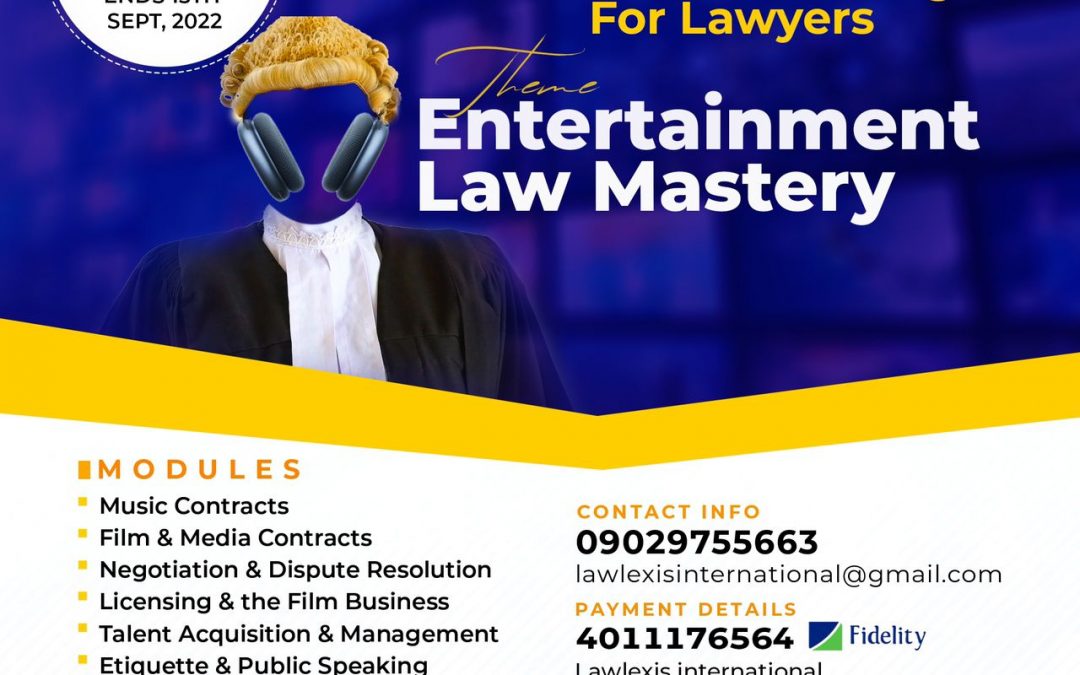
by Legalnaija | Aug 5, 2022 | Uncategorized

Career training programs prepare you for a job in a specific field, and this training is preparing lawyers for their role in the Nigerian entertainment industry.
According to statistics, total revenue in the Nigerian Entertainment industry is projected to reach US$4.77m in 2022. Furthermore, a report from consultants at PwC forecasts that the fast-growing industry will earn $14.8bn in 2025. No doubt the Nigerian entertainment industry is a big deal globally and with high revenues come legal issues and discussions.
According to Yahaya Maikori, the role of lawyers in the entertainment industry includes, but not limited to general counsel of the client, education, advocacy, advisory services, brand protection and management services.
We have put together a stellar faculty of award winning entertainment lawyers and experts to provide lawyers with a clear mastery of the entertainment industry and how to take advantage of the opportunities therein.
Modules for this training include;
1. Music Contracts & Agreements
2. Film & media Agreements
3. Negotiation & Dispute Resolution
4. Talent Acquisition & Management
5. Licensing & Intellectual Property
6. Etiquette & public speaking
The Members of Faculty include;
– Beverly Agbakoba-Onyejianya (Partner, Olisa Agbakoba Legal)
– Akinyemi Ayinuoluwa (Partner, Hightower Solicitors)
– Fola Alade (Partner, FOTEFA Partners LP/ Mediation Academy)
– Oyinkansola Fawehinmi (Foza) (Founder/President, DMCE.)
– Yeye Bush (Lead Etiquette Consultant, Manners Matter) .
Other details are:
Theme: Entertainment Law Mastery
Date : 29th & 30th September, 2022
Venue: NECA House, Alausa, Ikeja, Lagos
Time: 9am – 5pm daily
Registration Fee: 70,000 Naira | 50,000 Naira (early bird – ends 15th September, 2022)
Registration Link: https://bit.ly/3znIb4w
Participants who should attend include lawyers and stakeholders in the Entertainment industry at all levels. If you want a successful practice in Entertainment law and business, you should make sure you are in this room on Training Day.
For enquiries, please contact:
Lawlexis
09029755663
lawlexisinternational@gmail.com
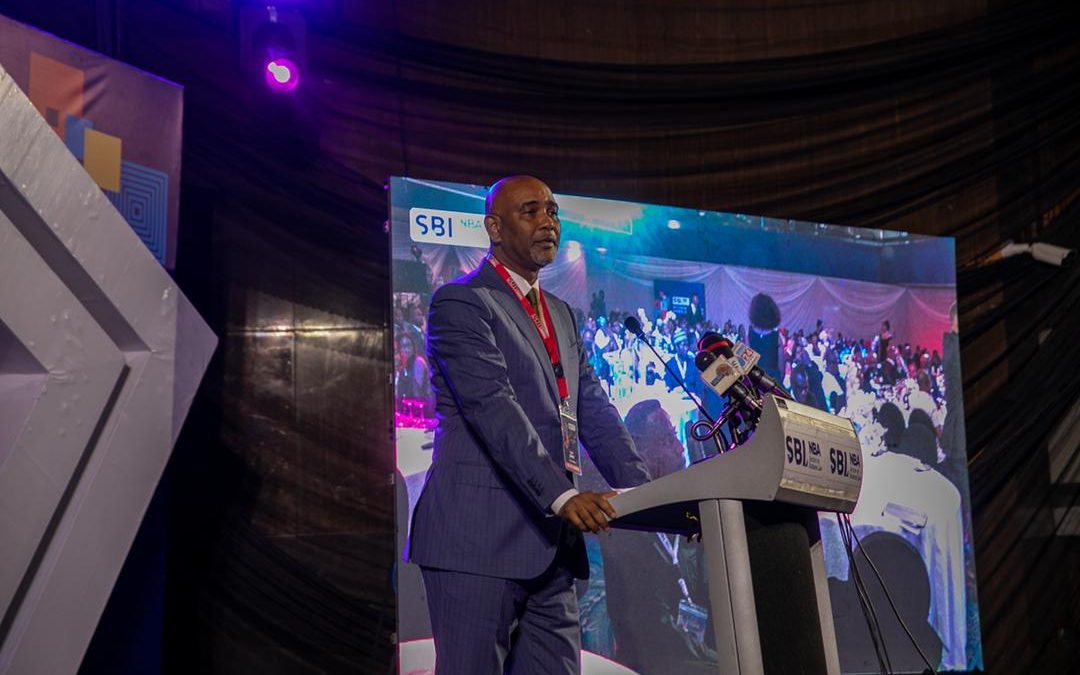
by Legalnaija | Jul 22, 2022 | Uncategorized
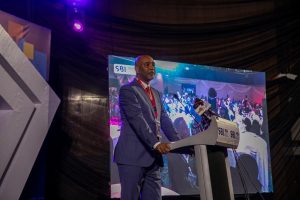
NBASBL Chairman, Ayuli Jemide
Protocols
Good evening, Ladies and Gentlemen. Thank you for making the time to join us at the 16thNBA-SBL Annual International Business Law conference.I appreciate the presence of our distinguished speakers and participants at this year’s conference.
A few things about this year’s conference:
As a central theme, we thought we should have conversations pertaining to recent developments in the business environment. A lot has been happening in the lawyering landscape that is worth talking about – from new legislations, to new trends, to recent law firm management successions, and several other topics worth talking about. (more…)

by Legalnaija | Jul 20, 2022 | Uncategorized
1.0 Introduction
A lady is a victim of rape, due to the shame, trauma and pain that comes with it, she keeps it to herself. Soon she finds out that she is pregnant, the father (rapist) unknown. She does not want to keep the child because he/she is a result of an unwanted unfortunate situation. Could she abort the fetus growing in her womb to become a child? Wouldn’t that be right considering the fact that she (a Secondary School Student) of poor parents who has no means to cater for the wellbeing of a soon to be child with no man enough father? Or would it be illegal to do so? Several sad tales.
The argument for or against abortion is a never ending debate, the legal position in respective jurisdictions notwithstanding.
The different sides of the divide will be the pro-choice (for abortion) and the pro-life (against abortion).
Part of the reoccurring questions that comes with this sensitive subject will be-
- Is Abortion always wrong?
- What about when it is done in certain situations such as:
- When the life or health of the mother is at stake?
- In the case of rape or incest?
- When exactly does life begin? – At fertilization? At the first heartbeat? At the existence of brain waves? Or immediately after carnal knowledge takes place.
- The pro-Choice
The Pro-choice will argue that for a lot of pro-lifers, it seems abortion is all about the baby.(Embryo or Fetus as the case may be). The woman, and the factors that might contribute to her decision to terminate her pregnancy, do not seem to matter much. But how can we end abortion if we do not examine why women seek out abortions in the first place? What if she wants to terminate the pregnancy because she does not have the maturity and capacity to carry and raise a child? What if she was just a victim of circumstance?
More so, making it illegal will not stop it from happening. The estimated unintended pregnancy rate is 59 percent per 1,000 women aged 15-49. 56 percent of unintended pregnancies are resolved by abortion and a research by Guttmacher Institute put the number of unsafe abortions done in Nigeria every year to 456,000.
The staggering statistics above shows that banning abortion does not necessarily reduce the abortion rate, and enforcing a ban on all abortions would be impossible, but will instead drive women to likely seek out abortions through unsafe, illegal procedures anyway which will only increase the mortality rate of young women.
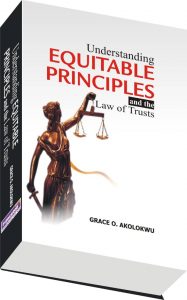
www.legalnaija.com/shop
The Pro-choice activists further argue that there might be a political undertone, because if this was about babies, there would be universal healthcare and free education for the children instead of Anti-abortion Laws. Or maybe Anti-abortion laws and Universal healthcare and free education policies and laws floating side by side. That is; if the Government really cared as much for the babies. The pro-choice activists will sum up their arguments by stating that as a woman, the idea that a government can make decisions about what a person should do with a person’s body in 2022 is absurd.
- Pro-life
The pro-lifers will definitely love to start their argument by stating that “If you do not want a baby, do not do the do that will make you have a baby”. Pretty straightforward right?Of cause not! What about the victims of rape?
The Pro-lifers will say that everything happens for a reason and that no matter how sad a person situation might be, you have no right to take “a life”. For this school of thought, once a baby begins to form, a life you have no right to take begins to form.
The only meeting point between morality (pro-life) and “being free” (pro-choice) will be in an instance when keeping the embryo or fetus in the womb of the mother could lead to the death of the mother. That is the only meeting point.
2.0 What is the position of the law?
The law is a tool of social engineering, blinded so it could see no sentiments or emotions, holding a sword to be used on anyone who does not comply with the words that flows freely from its unfettered mouth.
In Nigeria, criminal law system is divided between the northern and southern states. The Criminal Code is currently enforced in southern states. The abortion laws of the Criminal Code are expressed within sections 228, 229, and 230. Section 228 states that any doctor providing a miscarriage to a woman is guilty of a felony and up to 14 years of imprisonment. Section 229 states that any woman obtaining a miscarriage is guilty of a felony and may be sentenced to imprisonment for up to 7 years. Section 230 states that anyone supplying anything intended for a woman’s miscarriage is also guilty of a felony and maybe sentenced to up to 3 years of imprisonment. (Miscarriage in this instance means “Abortion on grounds aside health of the mother”).

www.legalnaija.com/shop
The Penal Code operates in northern states, with abortion laws contained in sections 232, 233, and 234. The sections of the Penal Code parallel the Criminal Code, besides the exception for abortion with the purpose of saving the life of the mother. The Penal Code’s punishments include imprisonment, fine, or both. The offenses of these codes are punishable regardless of whether the miscarriage was successful. No provisions have been made to the Criminal Code making exceptions for the preservations of the mother’s life. However, the cases of Rex v. Edgar and Rex v. Bourne have made it generally accepted that abortion performed to preserve the mother’s life is not an appropriate transgression of the Criminal Code.
3.0 Conclusion
The simple sublime interpretation is that the law has closed its eyes to any circumstance, be it; rape, incest, child pregnancy etc., but for the singular grounds of a life threatening situation for the mother.
Conclusively, the scale on the other hand of Justice in Nigeria as regards Abortion weigh in favour of the Pro-lifers. This is the situation not only in Nigeria but even in the United States thanks to the recently overturned decision of the Supreme Court of the United States in the case of Roe v. Wade.
The Pro-choice choristers will live to sing another day.
Sam Omotoso Esq, ACarb is a Lawyer, Chartered Arbitrator and an On Air Personality with special interest in Litigation, Human Rights and Legal Writing.
Martha Kama Esq is a Lawyer and an Equality advocate with a flair for family law and human rights.

by Legalnaija | Jul 14, 2022 | Uncategorized
It was in 2018, when a viral video of a sitting Governor in the North-Western part of Nigeria and one of the 36 states, circulated the internet[i]. In that disgraceful video, the Governor was seen pocketing a vast wad of American dollars which was believed to be a bribe from government contractors for public works. All efforts to dispel the video clip as fake were resisted by the Nigerian citizens whose minds were already made-up about deep-rooted corruption in the political system. Three years after the video, the Governor again in an interview maintained by saying “it is a lie, nothing of this nature ever happened”[ii].
Prior to this, one had stumbled on pornographic videos of top American celebrities while surfing the internet. These digital videos usually appear convincingly true until one reads press statements in the media, disputing their veracity or resorting to logic in arriving at a more reasonable outlook. The authenticity or otherwise of recent online videos can be difficult to decipher when produced or created with the now popular ‘deepfake technology’.
What is deepfake technology?
Deepfake technology is a type of artificial intelligence used to create convincing images, audio and video hoaxes[iii]. Deepfakes are a synthetic media created by machine-learning algorithms, named for the deep-learning methods used in the creation process and the fake events they depict[iv].
The earliest source of deepfake was for social media fun, where random fans of popular stars or politicians swap faces to represent their hero doing what they are best known for. There are countless videos, superimposing Nollywood Actor; Nicholas Cage’s likeness into countless movie scenes. Michael Jackson videos have also been manipulated by enthusiastic fans to mimic his natural dance talents.
A Joke Taken Too Far.
Unfortunately, what started as a fun tool has become a technology through which fake news, fact distortions, blackmail and political manipulation are portrayed. This raises public and legal concerns especially given the potential harm it causes to an individual’s reputation.
In 2018, a deepfake video of Donald Trump dismissing climate change was published by the Belgian socialist party “Socialistische Partij Anders”[v]. According to the political party, the intention was to use the fake video to grab people’s attention, then redirect them to an online petition calling on the Belgian government to take more urgent climate action[vi]. This 2018 fake video of the US President had serious implications on the climate change campaign and the world’s effort in the Paris agreement.
Deepfake technology has also led to a surge in the circulation of fake pornography videos of celebrities; mostly females, who, though, were not part of the video had their faces convincingly transposed into the bodies of the Actors[vii].
In 2020, rapper Jay-Z’s Roc Nation filed a take-down notices against “deepfake” videos that use artificial intelligence to make him rap Billy Joel’s song and one of Hamlet’s soliloquies[viii].
The Way Forward
In light of the of the problems associated with deepfakes, there is need for legal measures to be taken to curtail the devastating implications of this. The western world is leading in this approach to nip in the bud, the menace of deepfakes.
Two deepfake-related laws were proposed in the U.S. Congress, but failed to gain traction. These are the Malicious Deepfake prohibition Act of 2018 and the Deepfakes Accountability Act, which was filed in June 2019, created to address “the spread of disinformation through restrictions on deep-fake video alteration technology.” The bill would also criminalize communicating an intentionally false “personation record,” unless the fake nature of the message is conspicuously disclosed[ix] .
The EU does not have specific deepfake technology law yet. However, there is a proposed Artificial Intelligence Act which covers deepfake technology. Also, the General Data Protection Regulation represents a veritable piece of legislation that can be relied upon for scrutiny. Article 5 (1) of EU General Data Protection Regulation[x] for instance provides that;
“Personal data shall be accurate and, where necessary, kept up to date; every reasonable step must be taken to ensure that personal data that are inaccurate, having regard to the purposes for which they are processed, are erased or rectified without delay(‘accuracy’)”.
By virtue of the provisions of Article 5 of the EU GDPR, if a deepfake content is irrelevant, inaccurate or falsity, a victim can request that it be erased or rectified without delay within the European Union.
In 2021, the National Defense Authorization Act (NDAA)was passed by the US congress which requires the US Department of Home Security (DHS) to study deepfake creation technology and create mitigation solutions. The Act further requires DHS to provide annual reports identifying all potential harm from deepfake technology including foreign influence campaigns to harm specific populations for the next five years[xi].
More Countries, especially in Africa, needs to take initiatives from the US, in pushing agendas and the legislature to implement laws that will control the increasing problems of deepfakes. Nigeria for instance does not have a federal statute protecting the rights of citizens against deepfakes, but reliance can be placed on Section 37 of the constitution[xii] which protects the right to privacy, the Cybercrimes Act[xiii] and other subsidiary legislations.
[i] https://www.youtube.com/watch?v=MGCvXTISNns
[ii] https://dailytrust.com/ganduje-breaks-silence-on-dollar-videos-says-clips-are-fake
[iii] https://www.techtarget.com/whatis/definition/deepfake
[iv] https://www.discoverdatascience.org/articles/everything-you-need-to-know-about-how-to-use-deepfake/
[v] Flemish social democratic party founded in Belgium in 1978
[vi] https://www.theguardian.com/technology/2018/nov/12/deep-fakes-fake-news-truth
[vii] https://telanganatoday.com/anger-mounts-over-deepfake-porn-targeting-female-celebs
[viii] https://www.nme.com/news/music/jay-z-takes-legal-action-against-creator-of-deepfakes-of-him-rapping-hamlet-and-billy-joe
[ix] Defending Each and Every Person from False Appearances by Keeping Exploitation Subject to Accountability Act of 2019, H.R. 3230, 116th Cong. (2019); Malicious Deep
[x] The EU General Data Protection Regulation 2016/679
[xi] https://www.asisonline.org/security-management-magazine/latest-news/today-in-security/2021/january/U-S-Laws-Address-Deepfakes/
[xii] The Constitution of the Federal Republic of Nigeria 1999 (as amended)
[xiii] Cybercrimes (prohibition and prevention) Act 2015
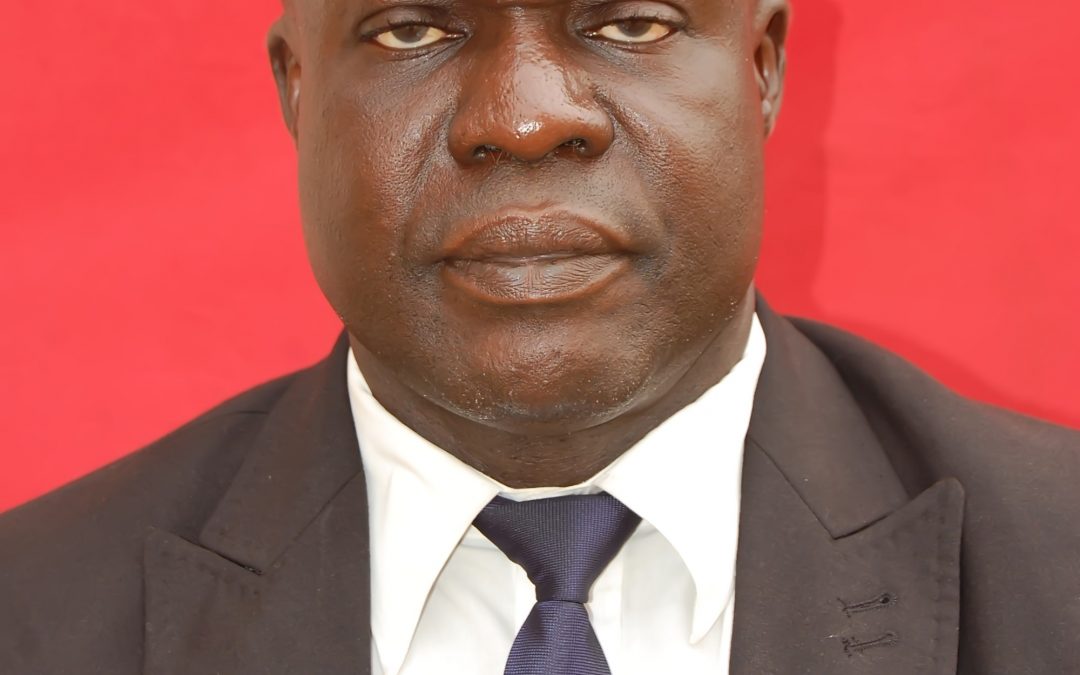
by Legalnaija | Jul 14, 2022 | Uncategorized
THE LEGAL EFFECT OF GOVERNMENT WHITE PAPER & RECCOMENDATIONS THEREIN: IN RESPECT OF THE PORTION OF OWERRI / ONITSHA ROAD INDUSTRIAL LAYOUT AND PORTION OF UMUGUMA LAND IN IMO STATE:
By
Osora F. Uzonwanne Esq.,
08033382080
4th July, 2022
INTRODUCTION: The Government of Imo State headed by Chukwuemeka Nkemakolam Ihedioha (CON) under the powers conferred on him by section 3 of the Commission of Enquiry Law (Cap.24), Laws of Eastern Nigeria, 1963 through an instrument constituted a Commission of Inquiry on Lands Related Matters which came into force on 19th day of August, 2019. The nine-man commission was chaired by Hon. Justice Florence I. Duroha-Igwe (Rtd).
The terms of reference of the commission are to wit:
- Ascertain the extent of land compulsorily acquired or forcefully wrested from the owners.
- Ascertain and determine whether such compulsory acquisition as mentioned in (a) above were lawfully made or not.
- Ascertain the extent of allocation and revocation of land in Imo State from June 2006 – May 2019 and determine the propriety of such allocation and revocation.
- Ascertain and determine whether due process and diligence and strict adherence to the provisions of Land Use Act, 1978 and all other relevant laws on acquisition of land were followed.
- Determine the extent of compliance with the relevant laws for the development of the New Owerri Capital Territory and adherence to the Master Plan of Owerri Capital Territory as authored by Fingerhurt and Partners.
- Examine and ascertain whether Government land or part of it have been converted to private use and identify the persons responsible and make recommendations for recovery.
A BRIEF HISTORY OF OKOHIA UMUNJO/ PORTION OF OWERRI/ ONITSHA ROAD INDUSTRIAL LAYOUT AND PORTION UMUGUMA LAND:
At the creation of Imo State in 1976, the Government acquired the entire expanse of land known and called OKOHIA UMUNJO/ UMUGUMA LAND, currently known as Industrial layout which was owned by the UMUNJO AND UMUGUMA COMMUNITY. The acquisition of the said land was for industrial purpose and it was done without due process and no compensation whatsoever was paid to the land owners.
The Okohia Umunjo/Umuguma land belonging to Umunjo and Umuguma Community and others was left to fallow for many years and became the den of arm robbers and kidnappers where they perpetrated all sorts of crimes.
As a result of the above, the Umunjo/Umuguma Community caused a letter to be written through their attorney to the government of Imo State dated 28th November, 2018 for the release of the said land back to them.
Through a letter dated the 14th of December, 2018 the Imo State Government released the Okohia land to the Umunjo/Umuguma Community through the Imo State Housing Corporation for the development of a layout to be called Pocket Layout.
Subsequently, there was a change of government which culminated to the assumption of the government of Rt. Hon. Emeka Ihedioha and the incident of constituting of a Judicial Commission of Inquiry into land related matters in the state.
The Umunjo/Umuguma Community petitioned the Judicial Commission of Inquiry as was required by the commission for all land owners whose land were affected to appear before the commission to make submissions of their claims to the commission.
At the end of the deliberations, the Judicial Commission of Enquiry came up with their Findings and Recommendations which was accepted by the incumbent government of Sen. Hope Uzodinma and same was passed into law and published in a White Paper, an Official Gazette.
Finally, it is worthy of note that the Umunjo Okohia and Umuguma land or Portion of Owerri/ Onitsha Road Industrial Layout is cut up and mentioned in the First, Second, Third and Fourth Terms of References of the Judicial Commission of Inquiry (as is mentioned above) in their Findings and Recommendations which is accepted by the Imo State Government. The summary of the panel’s findings and recommendations is that the said land was amongst the lands wrongly or illegally acquired by the government and there was no compensation paid to the land owners, thereby recommended that government should endevour to do the needful by following due process of acquisition of land . See: Government White Paper on the Report of the Judicial Commission of Enquiry on Lands and Related Matters Imo State (June 2006 – May 2019) published, August 2020.
THE LEGAL STATUS OF A GOVERNMENT WHITE PAPER BY A JUDICIAL COMMISSION OF INQUIRY:
It is apropos at this juncture to note that it was on the strength of the above white paper that gave impetus to the Interim Forfeiture Order by Hon. Justice E. F. Njamanze (Rtd.) on 24th February, 2021 and Final Forfeiture Order on 9th August, 2021 in Suit No. HOW/191/2021– Between: ATTORNEY GENERAL OF IMO STATE AND MRS NKECHI ROCHAS OKOROCHA & 5 ORS.
On 24th February, 2021 the court had ordered the Interim Forfeiture of all the properties linked to Okorocha. The court had also asked Okorocha to show case as to why a final and absolute order of forfeiture should not be given following an application brought to it by Louis Alozie on behalf of the state.
Okorocha through his counsel failed to give good reason why the order should not be made absolute. The court in a ruling delivered on 9th August , 2021 ordered the final forfeiture of properties said to be acquired through “illegal means” by Rochas Okorocha, ex-governor of Imo state. The forfeited properties are listed in the Imo State Government White Paper Report on recovery of lands and other related matters.
Hon. Justice Njemanze made a judicial pronouncement by saying that the White Paper Gazette by the Imo government is a legally-binding document. In defining what is white paper? Njamanze made reference to the case of TAO & SONS INDUSTIES LTD Vs GOVERNOR OF OYO STATE & ANOR (2010) LPELR 5002CA, The Court of Appeal per Kekere-Ekun JCA (as he then was) held:
“The view expressed by the court by Abdullahi Vs Hashidi at page 646 C-D is clear and straight forward. His Lordship Pats Acholonu JCA (as he then was) stated; “In the normal course of governace, the government, be it Federal, State or Local manifests its acceptance of a report or inquiry by way of publication of a White Paper which tells the world the reaction of the government to the inquiry.” The Supreme Court acknowledged the significance of a White Paper in the case of COOKEY Vs FOMBO (2005) 15 NWLR (pt. 947) 187 when it held that the 1st Respondent could not file an action against a third party on the recommendation of a panel of inquiry that had not been published in a White Paper.”
In MAJOR – GENERAL OLU BAJOWA Vs FRN & ORS (2016) LPLER-40229 CA. Ekanem JCA said:
“There is no doubt that the appellant could not have sued the Respondent in respect of the recommendation of justice Nwazota Panel because the government did not issue a white paper accepting or rejecting the same. In COOKEY Vs FOMBO (2005) 15 NWLR (pt. 947) 187 the supreme court held that the recommendation of a committee has no binding force and cannot ground a cause of action without a law or a White Paper. Also in GOVERNOR OF OYO STATE Vs FOLAYAN (1995) 1 NWLR (pt 413)292, 382. Onu JSC stated as follows “The government having not yet accepted the recommendations are legally not binding on the Government and the parties until accepted…It cannot be in doubt that where a government sets up a panel of inquiry, there must be some overt act by the government to signify its acceptance or rejection of the White Paper. The White Paper is notice to the whole world of the position taken by the government on relevant report… ” The reason is that a government that sets up a commission of inquiry is at liberty to reject or accept the recommendation of the commission. See AREMO 11 Vs ADEKANYE (2004)13 NWLR (pt 891) 571. So the Commission’s recommendation amounts to nothing until accepted by the government in a White Paper…”
The properties include Eastern Palm University, Ogboko; Royal Spring Palm Hotels and Apartments; IBC staff quarters illegally acquired for the purpose of Rochas Foundation College, Owerri; Magistrate Quarters, Orlu Road/Cooperative Office/Girls Guide Illegally converted to private use housing market square, Kilimanjaro Eatery; Public Building Plot B/2 Otamiri South Extension Layout given to the Ministry of Women Affairs for establishing a skills acquisition centre for women, illegally acquired for the benefit of Nneoma Nkechi Okorocha’s All-in Stall, Aba Road.
Others are Plot P5, Naze Residential Layout, initially part of Primary School Management Board but now annexed to All-in Stall, Aba Road belonging to Nkechi Okorocha, and all the properties contained from pages 226 to 272 of the Government White Paper on the recommendation of the Judicial Commission of Inquiry into land Administration in Imo State from June 2006 to May 2019.
Njamanze, based on the above legal backings added that the Imo State Government can go ahead and do whatever it deems fit with the properties. The judge also ruled that persons who might have purchased said properties are at liberty to approach the court to prove their titles:
“In essence, the White Paper gives the State Government power to retain custody of the properties listed therein as having been obtained or acquired in breach of the law. Any person who professes to own such properties which are found or contained in the white paper cannot lawfully walk into them without incurring the wrath of the government. At the point the government be it Federal , state, Local accepts the recommendations of the panel of inquiry and publish/gazette same as in the instant case, the properties are well taken over by the government absolutely until the person or persons affected show that the findings were patently erroneous. This can be done by taking up a writ of action to challenge the findings and recommendations contained in the white Paper or the White paper itself.”
CONCLUSION
The gamut of these write up concerns the powers of the governor of the state to constitute a judicial commission of inquiry and the legal status of the white paper gazette publishing the findings and recommendations of the commission. From the foregoing, the governor is empowered by the Commission of Inquiry Law to constitute the commission and arm it with the terms of references to base their inquiry on. From the plethora of cases cited above, and many others not cited, it is discernable that the White Paper is a notice to the world of the position of Government of Imo State over and in respect of all the lands contained therein including the Okohia Umunjo/ Umuguma Land. The Okohia Umunjo/Umuguma Land is now absolutely under the control of the State Government and the government is to synergize with the Umunjo/Umuguma Community for the appropriate compensation arrangements to be made between them according to the recommendations of the Judicial Commission of Inquiry as was published in the white paper gazette. Finally, there is a window of remedy for any aggrieved or affected person or persons to take up an action by way of a writ to challenge the white paper or the findings of the panel of inquiry by showing grounds why the property or properties should be left off the hook.
Osora Francis Uzonwanne is a PARTNER IN ADVANCED CHAMBERS, A LEGAL FIRM BASED IN OWERRI. He holds a Masters Degree in Philosophy and Currently undergoing a study for a Doctorate in Philosophy at Imo State University, Owerri.

by Legalnaija | Jun 12, 2022 | Uncategorized

A New Age:The 2022 Annual Conference of the Nigerian Bar Association (NBA) Section on Legal Practice (SLP) is set to usher in a new age of legal practice with its theme ” Legal Practice in Nigeria: Our Reality, Our Future. ”
Discussions on topical issues are scheduled to hold between July 3 and 6, 2022 in Asaba, Delta State, Nigeria.
TOPICS such as :
1. Legal Practice in Nigeria challenges and Solutions.
2. Lack of consistency in judicial pronouncements in Nigeria; code of conduct to the rescue.
3. Ethics in law practice;
4. Assisted reproductive technology and the law in Nigeria.
5. Court martial and opportunities for legal practice in the military
6. Alternative dispute resolution: A solution or illusion
Early Bird Registration ends in 5Days.
Hurry and Register Now; www.conference.nba-slp.org



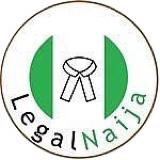



 The writer, Omole Damilare Fisayo is a 200 level student of the faculty of law, AdekunleAjasin University, AkungbaAkoko, Ondo state, Nigeria. He is a sports law enthusiast. He can be reached via +2349020837174 or his email: Omoledamilare093@gmail.com.
The writer, Omole Damilare Fisayo is a 200 level student of the faculty of law, AdekunleAjasin University, AkungbaAkoko, Ondo state, Nigeria. He is a sports law enthusiast. He can be reached via +2349020837174 or his email: Omoledamilare093@gmail.com.












